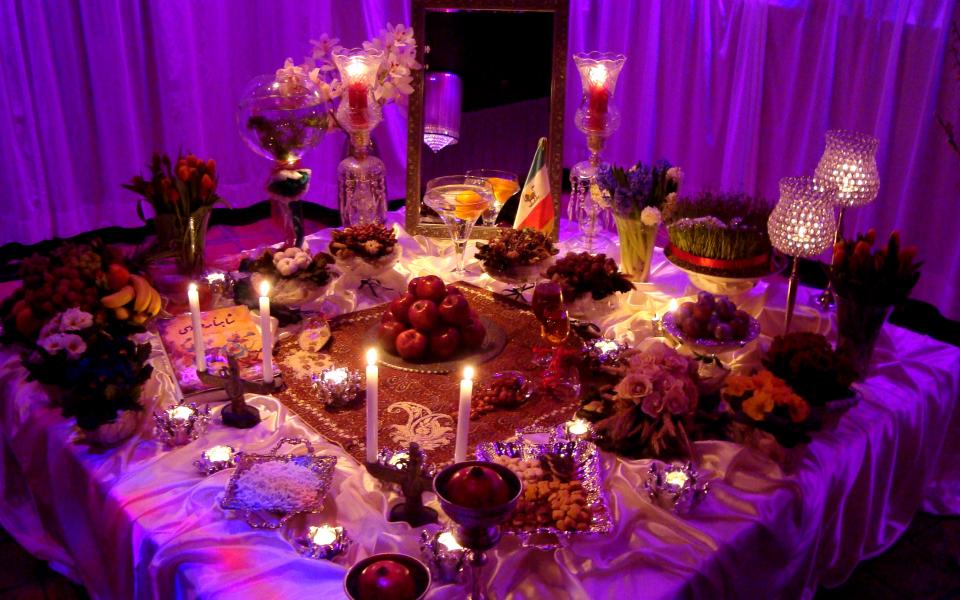
Persian New Year Table - Haft Sin - in Holland - Nowruz - Photo by Pejman Akbarzadeh PDN by PersianDutchNetwork via Wikicommons
Naw-Rúz, or Nowruz, is the first day of the Bahá'í calendar and the Persian New Year. It takes place on the vernal equinox. Beginning in Iran, Naw-Rúz is now celebrated by those of the Bahá'í faith throughout the world. The beginning of the new year signifies a close to the preceding month of fasting, which is often celebrated with dinner, music, prayer, and dancing.
People greet each other for the New Year with a hug or kiss on the cheek, and by exchanging sweets. It is a time for setting aside old arguments and renewing friendships with a fresh start. Many families also keep a Haft-Seen, or a symbolic arrangement of items on a tabletop. This can include: a platter of sabzeh (often wheat grass or sprouted lentils) symbolizing abundance and happiness; samanu (a sweet pudding) symbolizing power and bravery; senjed (dried Persian olives) symbolizing wisdom; seer (garlic) symbolizing activity; seeb (apple) symbolizing health; somāq (sumac berries) symbolizing patience and tolerance; and serkeh (vinegar) symbolizing cleanliness. The table also sometimes includes a coin symbolizing wealth, a mirror to symbolizing light, candles symbolizing children and family, and a religious text.
Cooperation Circles are formed by people of at least three different religions, spiritual expressions, and indigenous traditions. Celebrating each other's feasts has become a way to show mutual respect and appreciation. Explore our Cooperation Circles, many of whom are celebrating Naw-Rúz around the world with their Baha'i friends.